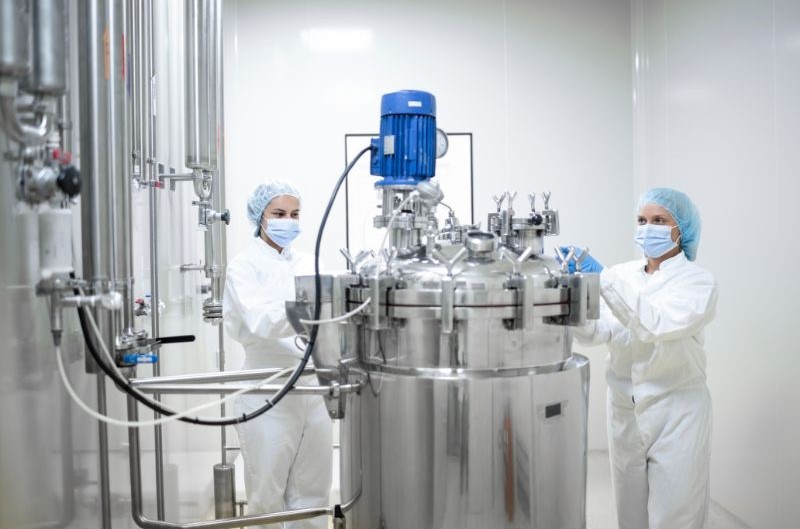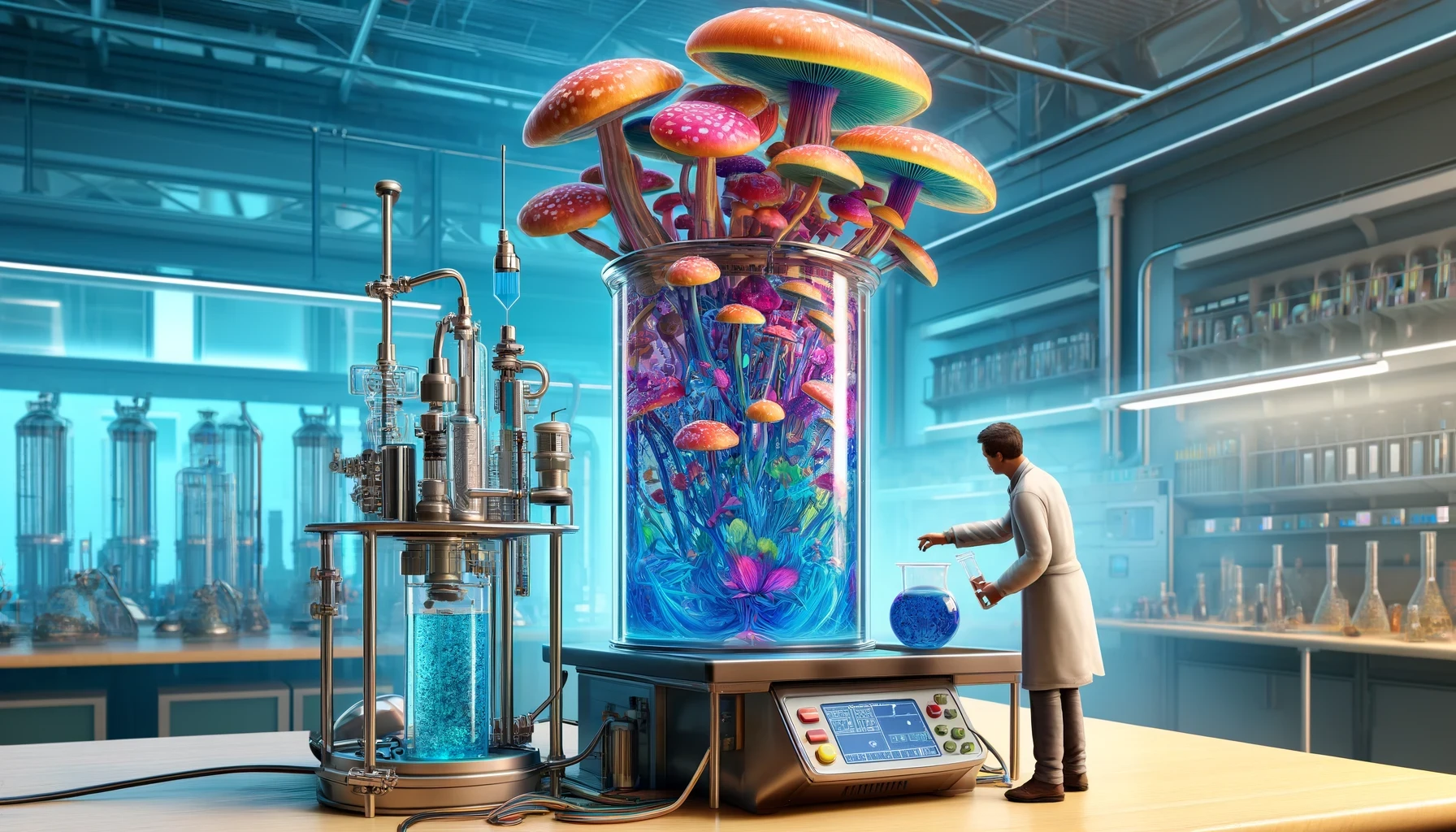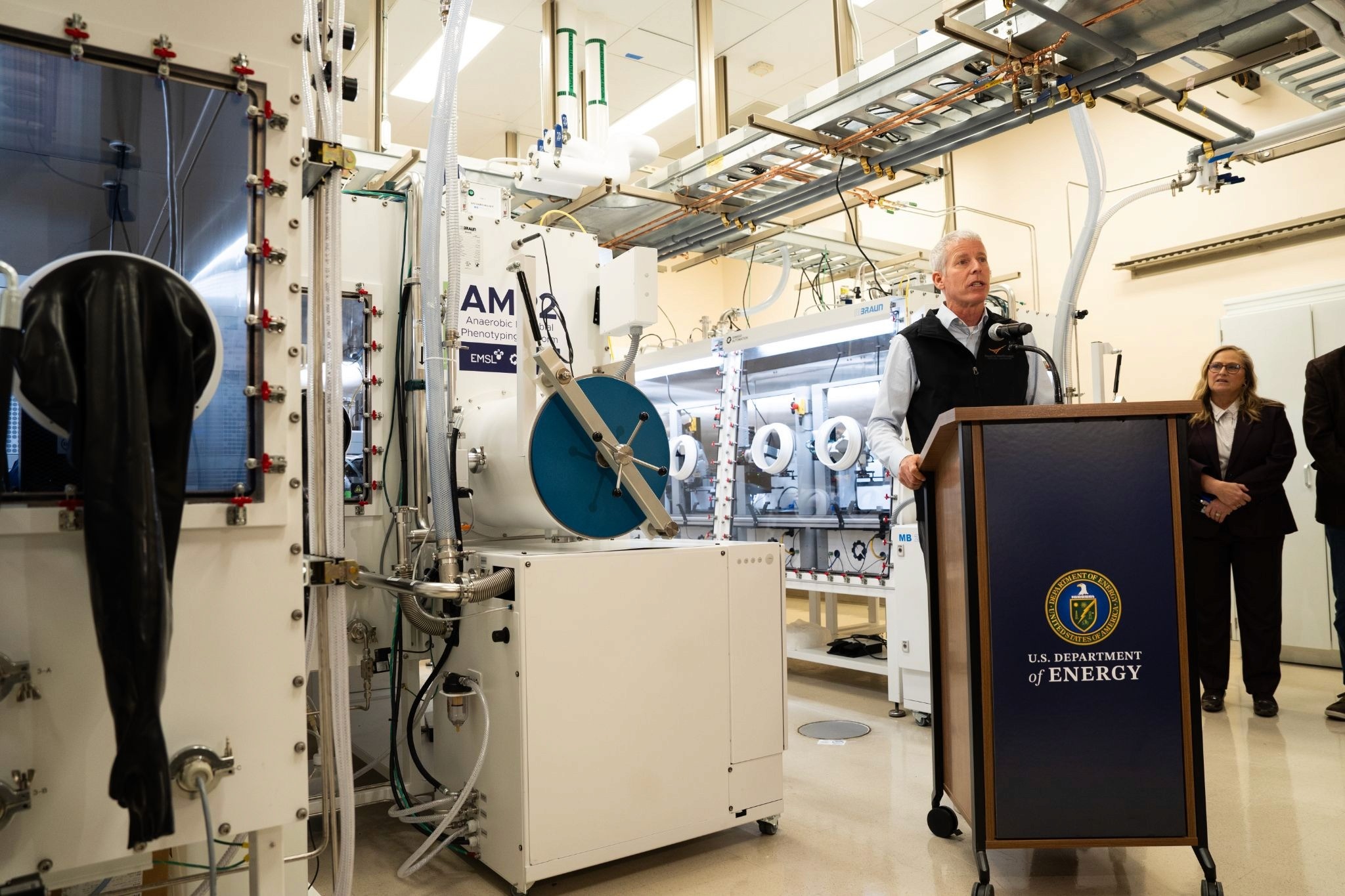Enabling Psychedelics Research with Precision Fermentation
Precision fermentation allows companies to produce a range of psychedelics and derivatives at scale
Apr 18, 2024
Mental health disorders affect over a billion people, with depression and anxiety being the most prevalent conditions. Commonly prescribed antidepressants don’t work for many people. Tackling the growing mental health problem requires other pharmacological approaches.

One of these is the use of psychedelics, a class of mind-altering compounds with a history that dates back to antiquity. For example, psilocybin, the main ingredient in magic mushrooms, has shown promise in curing treatment-resistant depression in early clinical trials. "While antidepressants primarily alleviate symptoms by numbing them, psychedelics offer a more profound relief by addressing the underlying mental health issues,” said Laura Korsakova, CEO of Lithuanian biotech Psylink.
The company aims to support psychedelic drug development, especially in Lithuania, which has the highest rate of suicides in the European Union. However, Psylink does not extract psilocybin from mushrooms. Like other synthetic biology companies in the space, it grows it in engineered yeast cells instead.
Precision Fermentation for Sustainable Ingredients
Naturally occurring psychedelics exist in low quantities. “Psilocybin is roughly 1% in mushrooms, but it depends on mushrooms to mushrooms,” said Sher Ali Butt, CEO of Carlsbad-based company CB Therapeutics. The batch-to-batch variation and low yields make it incredibly difficult to extract psychedelics at scale.
On the contrary, with precision fermentation, scientists can cultivate natural products in engineered microbes to ensure consistent yield and quality. This is why precision fermentation is increasingly becoming the go-to manufacturing method for psychedelics. Other synthetic biology companies employ the technology to create a range of chemicals, such as animal-free dairy, natural pigments, and biopolymers.
Compared to cultivating mushrooms and extracting psychedelics from them, growing them in bioreactors is more straightforward. The yeast takes sugar from the growth medium and converts it into chemicals according to the biosynthetic pathways engineered into it. In addition to predictable quality, it costs less. Brewing chemicals with yeast is a well-established method, as ancient as the first psychedelic cave art. “This approach is beneficial because it allows the process to be upscaled much more easily,” said Korsakova.
Psychedelics can be produced via chemical synthesis as well, but that’s unsustainable. “For every kilogram of product that you make, you will make roughly 10 kilograms of toxic waste,” said Butt. On the contrary, precision fermentation does not produce toxic waste. Cultivating the yeast cells on waste feedstock enables circularity, further improving the operation's sustainability.
Precision fermentation also allows manufacturers to access rare psychedelics. These could be psychedelic compounds with missing genetic data or unknown biosynthetic pathways. Or these could be psychedelics that are present in extremely low concentrations in their native host or are highly unstable. More importantly, a precision fermentation platform improves with each product a company synthesizes.

Butt compares it to how a large language model gets better with additional data fed into it. Working on each subsequent biosynthetic pathway is usually cheaper and faster. “Our platform has greatly improved where first it would take us years to make a certain prototype and develop a product, but now we can do it in a matter of months,” said Butt.
CB Therapeutics synthesizes psilocybin, psilocin, and dimethyltryptamine (DMT), among other psychedelic compounds and cannabinoids, via precision fermentation. Psylink is also working on these tryptamines as well as other classic psychedelics. Besides, researchers and companies, including CB Therapeutics and Psylink, are also developing derivatives of natural psychedelics and completely novel psychedelics.
Expanding the Psychedelic Library
Pharma companies are interested in psychedelic derivatives because, unlike natural psychedelics, they are patentable. But they can also pave the way for psychedelics with interesting properties. For instance, think of psychedelics that don’t elicit hallucinations.
Growing evidence suggests that hallucinations, arguably the fun part of the recreational use of psychedelics, aren’t necessary for the therapeutic effect. Eliminating the trip could also make it easier to conduct psychedelic clinical trials. Presently, the visible signs of psychedelics make it hard to blind clinical trials.
Derivatives also allow researchers to fine-tune the pharmacological properties of psychedelics. “Several academic groups, my own and others, have reported the biosynthesis of a range of tryptamine derivatives, including psilocybin and DMT derivatives,” said Andrew Jones, associate professor of chemical, paper, and biomedical engineering at Miami University. Andrew will be speaking about psychedelics at this years Global Synthetic Biology Conference in a session entitled "Mindful Molecules: Synthesizing New Hope in Psychedelic Therapies."
Jones said that “the beauty of synthetic biology is that it enables us to combine naturally occurring enzymes from diverse organisms in ways that do not exist in nature.”. With the combinatorial assembly of metabolic pathways, scientists can tap a great diversity of psychedelic-inspired molecules.
Producing psychedelics and their derivatives cheaply will enable clinical studies on psychedelic therapy. This is critical as psychedelics could potentially address unmet clinical needs in and beyond mental health illnesses.
However, precision fermentation has its bottlenecks. Jones said that a limitation is the “low overall enzyme activity, particularly when leveraging the promiscuous action of these enzymes towards their nonnative hosts.” To overcome this, scientists are learning more about critical enzymes involved in psychedelic biosynthesis and their mechanisms of action, which will improve activity towards new desired substrates.
Purifying these compounds from the highly ionic cell broth matrix also presents a hurdle to the process development pipeline. Another way synthetic biology could improve yields is by screening high-producing strains quickly. For instance, Ellis and colleagues developed a yeast biosensor workflow to screen microbial strains producing tetrahydrocannabinol (THC), the principal psychoactive constituent in cannabis.
Jones added that while the production metrics for derivative psychedelics remain low, precision fermentation of natural psychedelics like psilocybin is progressing towards economically feasible levels.
Effective Psychedelics at Scale
Korsakova said that “with artificial intelligence, we are going to see a lot of breakthroughs in not only the psychedelic industry but in general for small molecule synthesis.” Advances in strain engineering, bioreactor design, and process improvements will further increase yields from precision fermentation. For example, Tom Ellis, a synthetic biologist at Imperial College London and the principal investigator of yeast biosensor research, works on synthetic genomes and chromosomes that might be used in industrial fermentation in the future.

“They will be well-suited to this because, by design, they are more resistant to phage and viruses that often ruin fermentations,” said Ellis. Moreover, “they are better genomes for adding extra chemical complexity into cells.”
While the industry should pursue moonshots, mental health patients need effective psychedelics now. Companies must strike a balance between what is synthesizable at scale and what will have the most significant impact on the lives of mental health patients.
“The largest need currently is in identification of which products would be the best to pursue,” said Jones.


















